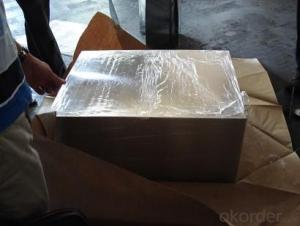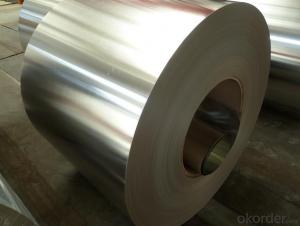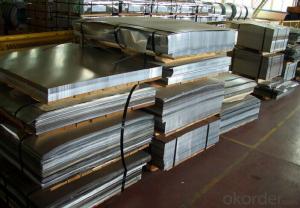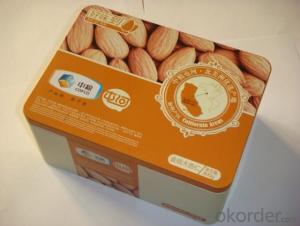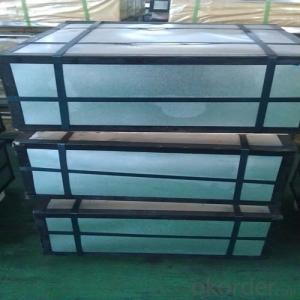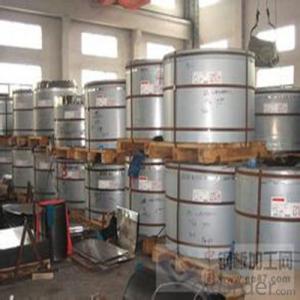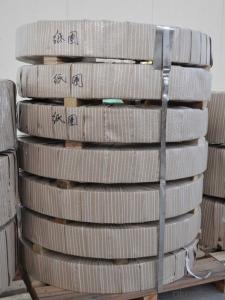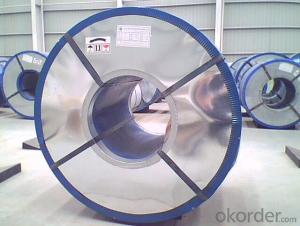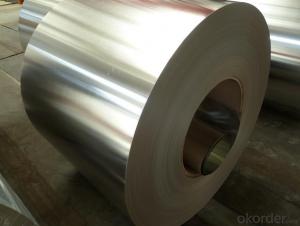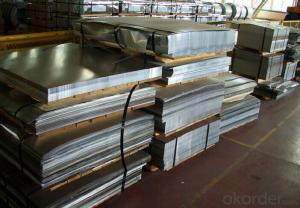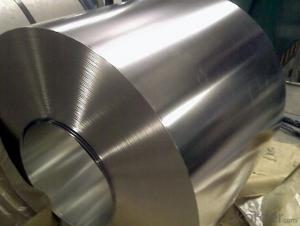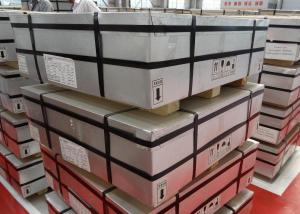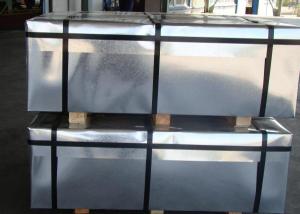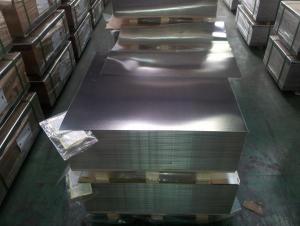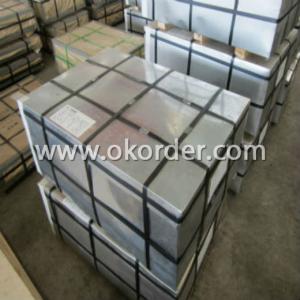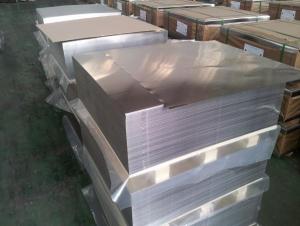Tinplate Sheets for Chemical Cans Use with 0.18mm Thickness
- Loading Port:
- Shanghai
- Payment Terms:
- TT or LC
- Min Order Qty:
- 25 m.t.
- Supply Capability:
- 1000 m.t./month
OKorder Service Pledge
OKorder Financial Service
You Might Also Like
1.Structure of Tinplate Sheets for Chemical Cans Use with 0.18mm thickness Description
Tinplate Sheets for Food Cans Use with 0.18mm thickness is one of the metal packing materials, which is widely used for making painting cans ,chemical package cans , electrical cable ,battery and metal printing etc.
2. Main Features of the Tinplate Sheets for Chemical Cans Use with 0.18mm thickness
Steady and high quality
Fast shipment
Good experience for export work
For the surface, Plate uniform in thickness,uniform and smooth tin coating, without flaws,rusts,scratch,wave,nick of tin coating etc.
Thin Thickness
3.Tinplate Sheets for Chemical Cans Use with 0.18mm thickness Images
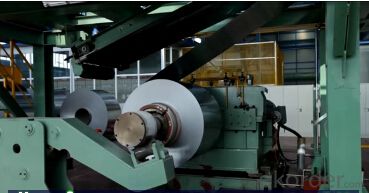
4. Tinplate Sheets for Chemical Cans Use with 0.18mm thicknessSpecification
Standard : GB2520-2000 ,JIS G3303
Steel type : SPCC
Coating : 2.8/2.8
Surface: Bright, Stone ,
Thickness:0.18
Width :600MM~1000MM
Temper : T1~T5
Package: tinplate wrapped completely with an inner cover of plastic or waterproof papers with vorners protected with metal angels.
5.FAQ of Tinplate Sheets for Chemical Cans Use with 0.18mm thickness
A. What is the package of tinplate? (Referred as below)
For sheets, thin plastic film + rust-proof paper + metallic cover + metallic angles+ steel band strips + fumigated wooden pallet.
For coil, thin plastic film + rust proof paper + metallic cover + steel band strips + fumigated wooden pallet
B. The surface of tinplate could you supply?
Stone finish, Bright finish, Matte finish, Silver finish
C. What is the tin coating you can produce?
We can produce E2.8/2.8,D2.8/5.6 and E5.6/5.6 etc.
- Q: What are the advantages of using tinplate for cosmetic packaging?
- Tinplate offers several advantages for cosmetic packaging. Firstly, it provides excellent protection against moisture, air, and sunlight, ensuring the longevity and quality of the cosmetic products. Secondly, tinplate is highly durable and resistant to corrosion, making it ideal for storing and transporting cosmetics without the risk of damage or contamination. Additionally, tinplate can be easily molded into various shapes and sizes, allowing for creative and attractive packaging designs. Lastly, tinplate is recyclable, making it an environmentally friendly choice for cosmetic brands aiming to reduce their carbon footprint.
- Q: How is tinplate coated for automotive components?
- Tinplate for automotive components is typically coated through a process called electrolytic tin plating. In this process, a thin layer of tin is electroplated onto the surface of the tinplate substrate. This coating enhances the corrosion resistance and appearance of the automotive components, making them suitable for various applications in the automotive industry.
- Q: What are the different types of tinplate closures available?
- There are several types of tinplate closures available, including twist-off caps, lug caps, pry-off caps, and crown caps.
- Q: How is tinplate recycled?
- Tinplate is recycled by first collecting it from various sources, such as food cans or packaging materials. The collected tinplate is then sorted and separated from other materials like paper or plastic through a magnetic separation process. After this, the tinplate is shredded into small pieces and further sorted to remove any remaining impurities. The clean tinplate pieces are then melted in a furnace to separate the tin coating from the steel base. The separated tin and steel are both recycled separately, with the tin used for various purposes like coating new tinplate or producing solder, while the steel is reused for manufacturing other steel products. Overall, the recycling process of tinplate helps conserve resources, reduces waste, and promotes environmental sustainability.
- Q: How does tinplate packaging contribute to product convenience?
- Tinplate packaging contributes to product convenience by providing a durable and lightweight solution that ensures the preservation and protection of the contents. Additionally, its easy-to-open feature, resealable options, and ability to be easily transported make it a convenient choice for consumers.
- Q: Can tinplate be used for packaging hazardous materials?
- Yes, tinplate can be used for packaging hazardous materials. Tinplate is a robust and durable material that provides excellent protection against external elements and corrosion. It is commonly used for packaging hazardous materials such as chemicals, paints, and aerosols due to its ability to withstand the potential risks associated with these substances. Additionally, tinplate is easily recyclable, making it an environmentally friendly choice for packaging hazardous materials.
- Q: How does tinplate contribute to the preservation of historical artifacts?
- Tinplate contributes to the preservation of historical artifacts by providing a protective barrier against environmental factors such as moisture, oxygen, and light. It helps prevent corrosion, rusting, and degradation of the artifacts, thus extending their lifespan and maintaining their historical value.
- Q: Raw material for zinc clad sheet? Can zinc clad plate replace tinplate?
- What is the meaning of zinc coated plate, is galvanized plate, galvanized sheet and tinplate is completely different, different materials, galvanized plate is carbon steel, tinplate is high-quality steel and tinplate is tin, zinc galvanized plate.
- Q: What are the main trends in tinplate recycling?
- The main trends in tinplate recycling include increased awareness and adoption of recycling initiatives, technological advancements in sorting and processing methods, and the promotion of circular economy principles to minimize waste and maximize resource efficiency.
- Q: How does tinplate compare to other packaging materials in terms of shelf appeal?
- Tinplate stands out among other packaging materials in terms of shelf appeal due to its unique metallic appearance and durability. Its glossy finish and reflective properties attract attention and enhance the visual appeal of products on store shelves. Additionally, tinplate can be easily customized with vibrant colors, intricate designs, and embossing, making it an excellent choice for brands looking to create eye-catching packaging. Overall, tinplate offers a visually appealing and premium look that sets it apart from other packaging materials.
Send your message to us
Tinplate Sheets for Chemical Cans Use with 0.18mm Thickness
- Loading Port:
- Shanghai
- Payment Terms:
- TT or LC
- Min Order Qty:
- 25 m.t.
- Supply Capability:
- 1000 m.t./month
OKorder Service Pledge
OKorder Financial Service
Similar products
Hot products
Hot Searches
Related keywords
